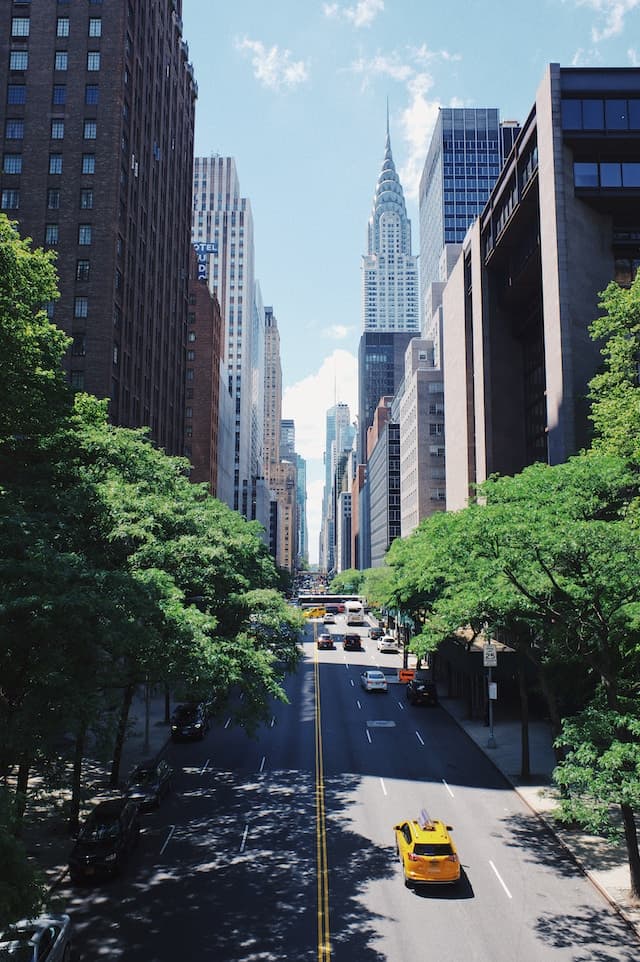1 Furnished and unfurnished apartments for rent in Fort Greene, Brooklyn: Browse and book your perfect home today
Secure your perfect apartment in the best neighborhoods, with flexible 1-month+ leases. Apply today and move in tomorrow!
Welcome to Fort Greene, a family-friendly neighborhood in the New York City borough of Brooklyn. Known for its tree-lined streets and highly diverse demographic, Fort Greene is a residential area located in the northwestern section of Brooklyn, not far from this borough’s central business district. Centered around Brooklyn’s oldest public park eponymously renamed after the neighborhood, Fort Greene is bounded by Clinton Hill to the east, Prospect Heights to the south, Downtown to the west, and Brooklyn Navy Yard to the north. This neighborhood takes its name from an earthwork fort used during the American Revolutionary War, built under the supervision of Nathanael Greene in 1776. Before coming to be known as Fort Greene, this area was called The Hill, a small community of farmers that began selling off their land in the 1840s to developers who built country villas and rowhouses that dotted the still bleak countryside. One such home belonged to the famous poet Walt Whitman. By the mid-19th century, this neighborhood carried an air of prestige similar to Brooklyn Heights and was home to many prominent New York City residents. To accommodate the influx of people moving out of crowded Manhattan and into Brooklyn, the remaining undeveloped land in Fort Greene was quickly developed with blocks of rowhouses exhibiting a variety of architectural styles. By 1870, more than half of Brooklyn’s African-American population lived in Fort Greene. Fort Greene experienced a cultural revival in the 1980s and 1990s that has been likened to the Harlem Renaissance and led to it being recognized as one of Brooklyn’s best neighborhoods in terms of racial and economic diversity.
Just over a half square mile in total area, Fort Greene today has a population of over 28,000 people with a median age of approximately 35. Its proximity to Downtown Brooklyn and several educational institutions, such as the Long Island University of Brooklyn and the New York City College of Technology, make Fort Greene a popular home among college students, as well as families and single working professionals. Despite some mixed-use residential high-rises near the border of Fort Greene and Prospect Heights, this area still maintains hundreds of Italianate, Neo-Grec, and various Revival-style rowhouses built in the mid to late-19th century. Fort Greene consists of several commercial thoroughfares, most notably, Dekalb Avenue, along which you can find a plethora of bars and restaurants that attract visitors and residents. You can also find a large grouping of cafes and eateries at the x-shaped intersection of Fulton Street and Portland Avenue. If you are looking for outdoor recreation, look no further than Fort Greene Park, a historic 30-acre urban green space that was once the site of the fort this neighborhood was named after. Brooklyn’s first official public park, this tree-filled urban oasis and is now home to playgrounds and tennis courts. Fort Greene is a great neighborhood for those that use public transportation. This community is served by four New York City Subway stations, the largest being Atlantic Avenue–Barclays Center station.
Our blog’s top picks to help you find the perfect short-term rental in New York City
- 10 Best Neighborhoods to Live and Rent in New York City
- New York City’s Safest Neighborhoods and Places to Live
- How Much Rent Can I Afford In NYC? NYC Rent Calculator
- How to Find a Roommate in a New City?
- Rent Split Calculator: How To Split Rent Fairly?
- 3x Rent Calculator: Determining Affordable Rent
- Intern Housing in NYC
- New York City's Hottest Neighborhoods Right Now
- Pros and Cons of Renting and Living in Shared Apartments
Neighborhoods
- Bedford-Stuyvesant
- Brooklyn
- Bushwick
- Clinton Hill
- Crown Heights
- Ditmas Park
- East Williamsburg
- Flatbush
- Fort Greene
- Greenpoint
- Park Slope
- Prospect Heights
- Prospect Lefferts Gardens
- Prospect Park South
- Sunset Park
- Williamsburg
- Central Harlem
- Central Park
- Chelsea
- Chinatown
- Columbus Circle
- East Harlem
- East Village
- Gramercy
- Hamilton Heights
- Hell's Kitchen
- Kips Bay
- Lincoln Square
- Lower East Side
- Midtown East
- Midtown West
- Morningside Heights
- Murray Hill
- SoHo
- South Harlem
- Upper East Side
- Upper West Side
- West Harlem
- Astoria
- Flushing
- Ridgewood
Apartments and Rooms for Rent
Rent Nearby NY Universities
- Columbia University
- New York University
- Cornell University Weill Medical College
- The Juilliard School
- The New School
- Fashion Institute of Technology
- Baruch College (CUNY)
- Hunter College (CUNY)
- City College of New York (CUNY)
- Pace University
- Yeshiva University
- School of Visual Arts
- Pratt Institute
- Teachers College, Columbia University
- The Cooper Union for the Advancement of Science and Art
- Manhattan School of Music
- John Jay College of Criminal Justice (CUNY)
- The Rockefeller University
- Mount Sinai School of Medicine
Rent Nearby NY Hospitals
- NewYork-Presbyterian Weill Cornell Medical Center
- NYU Langone Hospitals Center
- Mount Sinai Hospital
- Memorial Sloan Kettering Cancer Center
- Hospital for Special Surgery
- NewYork-Presbyterian Columbia University Irving Medical Center
- Lenox Hill Hospital
- Mount Sinai Morningside
- NYU Langone Orthopedic Hospital
- Bellevue Hospital Center
- The Brooklyn Hospital Center
- NewYork-Presbyterian Brooklyn Methodist Hospital
- Mount Sinai West
- New York Eye and Ear Infirmary of Mount Sinai
- NewYork-Presbyterian Lower Manhattan Hospital
- NewYork-Presbyterian Allen Hospital
- NewYork-Presbyterian Morgan Stanley Children's Hospital
- NYC Health + Hospitals/Harlem
- NYC Health + Hospitals/Metropolitan
- Lenox Health Greenwich Village







